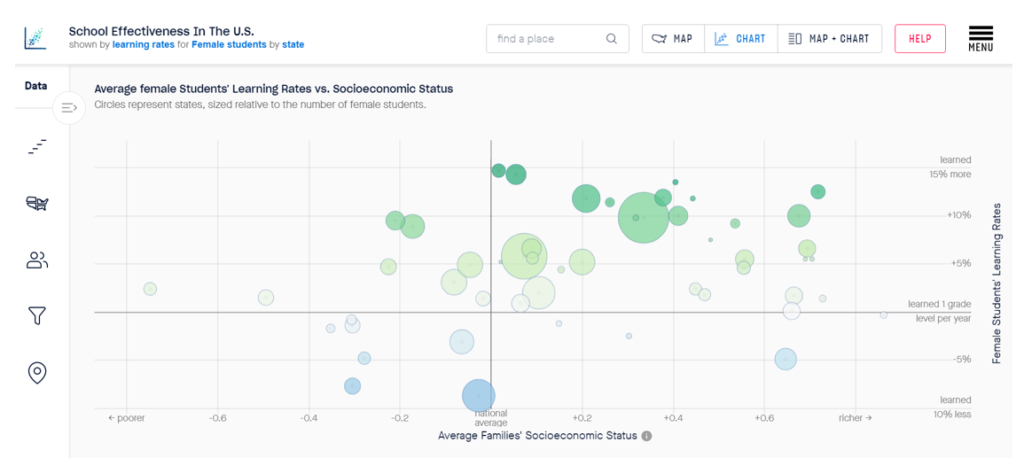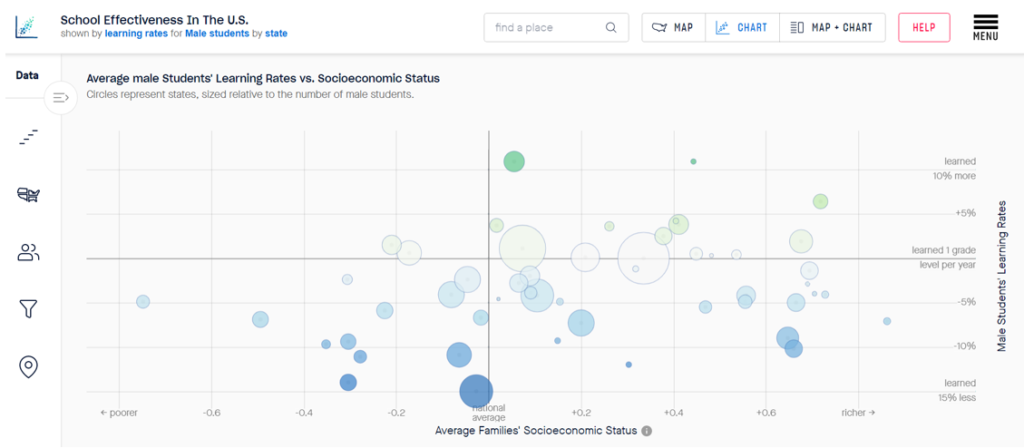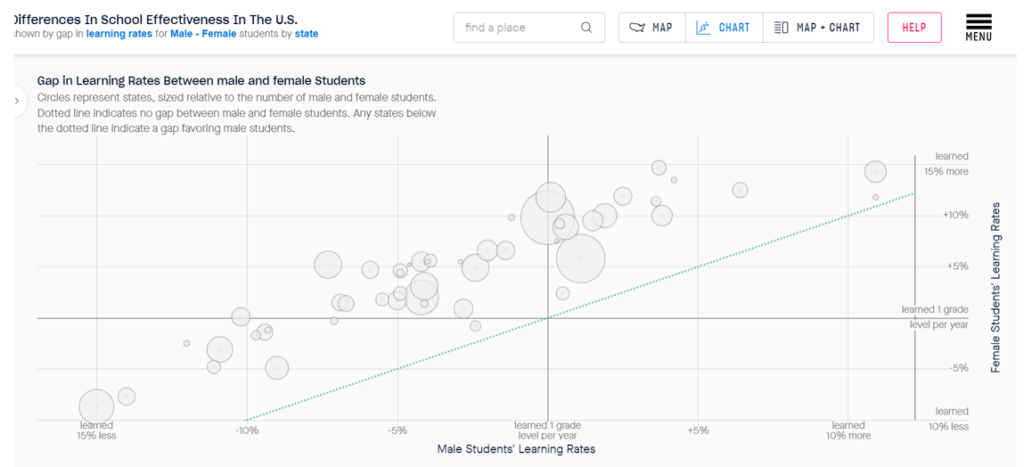 The Wall Street Journal recently reported that at the close of the 2020-21 academic year, women comprised 59.5% of college students, an all-time high. Men, at 40.5%, were at an all-time low, according to enrollment data from the National Student Clearinghouse. The Journal also reported that U.S. colleges and universities had 1.5 million fewer students compared with five years earlier, with men accounting for 71% of the decline.
The Wall Street Journal recently reported that at the close of the 2020-21 academic year, women comprised 59.5% of college students, an all-time high. Men, at 40.5%, were at an all-time low, according to enrollment data from the National Student Clearinghouse. The Journal also reported that U.S. colleges and universities had 1.5 million fewer students compared with five years earlier, with men accounting for 71% of the decline.
Does the K-12 system bear some of the blame for this? The Educational Opportunity Project at Stanford University has data that will allow you to judge for yourself.

This graph shows data the Project collected on academic growth in grades 3-8 between 2008 and 2018 presented by state. The rate of academic growth for American students generally is low compared to other advanced countries. You certainly want to be above the horizontal line. For the most part, female students were showing above average levels of academic growth during the period covered.
When examining the rates for boys in this next chart, the desired dark green dots get much scarcer, while the dreaded blue and dark-blue dots appear.

The Stanford website also allows you to compare gaps in growth rates. This graph shows that in every single state, the rate of academic growth for girls exceeded those of boys. The issue appears to be a far cry from being random.

Mind you that all this data was gathered before the COVID-19 disaster.
ZIP-code assignment into a system of largely non-specialized schools bound and determined to maximize non-teaching employment for adults isn’t working out for boys. Having these schools go through the motions of being held “accountable” so as to avoid being put on double secret probation appears ineffectual, or perhaps even counterproductive.
It’s unclear the extent to which the K-12 status-quo is either the problem or part of the problem, but the second chart makes it abundantly clear that it is not much of a solution. It’s time for new approaches and school models.


